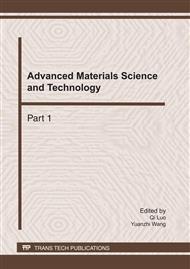[1]
Information on http: /en. wikipedia. org/wiki/Denial-of-service_attack.
Google Scholar
[2]
M. Narita, T. Katoh, B. Bista and T. Takata: Lect. Notes Comput. Sci., Vol. 5774(2009), pp.91-102.
Google Scholar
[3]
N. Ranjan, H. Murthy, H and T. Gonsalves, in: Proc. of 16th Natl. Conf. Commun., (2010), pp.1-5.
Google Scholar
[4]
M. Wesley: The Internet Protocol Journal, Vol. 9 (2006), pp.2-16.
Google Scholar
[5]
P. Matzinger: Sc. & J. Immunol., Vol. 54 (2001), pp.4-9.
Google Scholar
[6]
P. Matzinger: Science, Vol. 12 (2002), pp.301-305.
Google Scholar
[7]
F. Sun and L. Gao, in Proc. of the 2010 ETP/IITA Conference on System Science and Simulation in Engineering, (2010), pp.62-65.
Google Scholar
[8]
F. Sun, M. Kong and J. Wang, in: Proc. of the 2010 Second International Conference on Multimedia and Information Technology, Vol. 2 (2010), pp.93-95.
Google Scholar
[9]
F. Sun, X. Han and J. Wang, in: Proc. Of the 2010 International Conference on Challenges in Environmental Science and Computer Engineering, Vol. 2 (2010), pp.33-35.
Google Scholar
[10]
S. Forrest, S. Hofmeyr and A. Somayaji: Communications of the ACM, Vol. 40(1997), pp.88-96.
Google Scholar
[11]
S. Hofmeyr and S. Forrest, in: Proc. of Genetic Evolutionary Computation Conf., (1999) pp.1289-1296.
Google Scholar
[12]
S. A. Hofmeyr and S. Forrest: Evolutionary Computation, Vol. 8(2000), pp.443-473.
Google Scholar
[13]
L. N. De Castro and J. I. Timmis: Soft Computing, Vol. 7(2003), pp.526-544.
Google Scholar
[14]
E. Klarreich: Nature, Vol. 415 (2002), pp.468-470.
Google Scholar
[15]
F. Sun and F. Xu, in: Proc. of the 3rd International Conference on Bioinformatics and Biomedical Engineering, Vol. 1 (2009), pp.1-4.
Google Scholar
[16]
F. Sun, Q. Zheng and T. Li, in: Proc. of the 2nd International Conference on Bioinformatics and Biomedical Engineering, Vol. 1 (2008), pp.644-647.
Google Scholar
[17]
T. Li: Sci. in China, Ser. F: Info. Sci., Vol. 51 (2008), pp.1475-1486.
Google Scholar
[18]
F. Sun and S. Zhang, in: Proc. of the 2009 International Conference on Web Information Systems and Mining (2009), pp.515-518.
Google Scholar
[19]
Q. Sun, S. G. Wang, D. F. Yan and F. C. Yang, in: Proc. of 2009 2nd IEEE International Conference on Broadband Network and Multimedia Technology, (2009), pp.443-447.
Google Scholar


